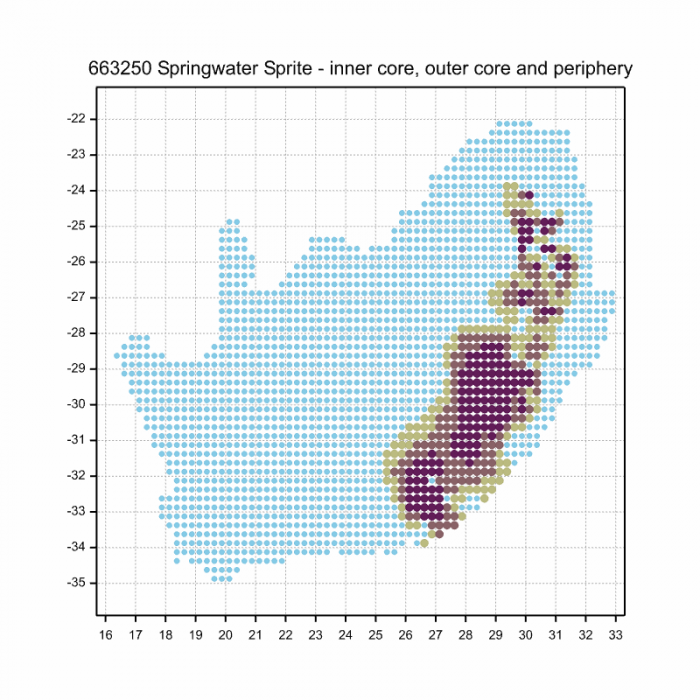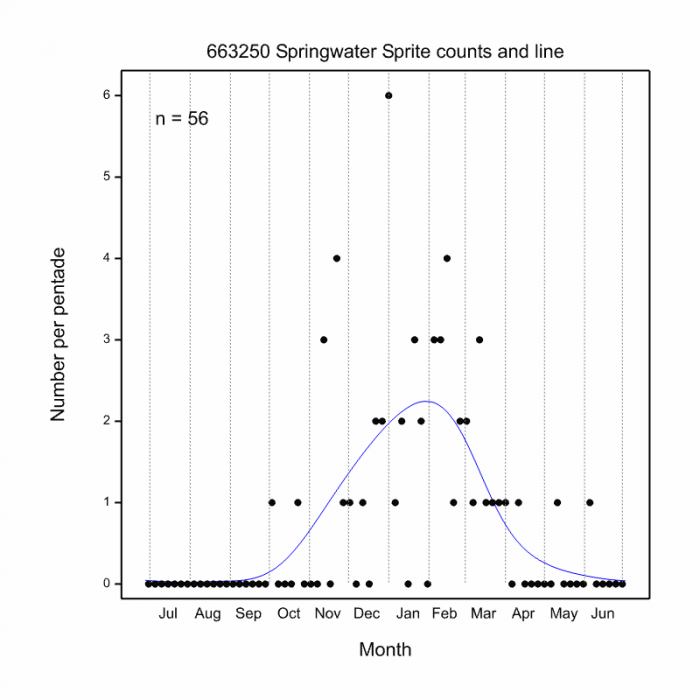Cover photo by Gregg Darling.
Find the Springwater Sprite in the FBIS database (Freshwater Biodiversity Information System) here.
Family Coenagrionidae
Identification

Near Estcourt, KwaZulu-Natal
Photo by Alan Manson
Small size
Length reaches 36mm; Wingspan attains 47mm.
Pseudagrion caffrum is one of three ‘yellow-faced’ sprites in the region. The other two are The Yellow-faced Sprite (Pseudagrion citricola) and the Great Sprite (Pseudagrion gamblesi). The Great Sprite is easily distinguished by its significantly larger size and bright blue terminal segments. The Springwater Sprite is most similar to the Yellow-faced Sprite, but is differentiated by lacking postocular spots and bright blue terminal segments on the abdomen.
Female Springwater Sprites are among the more distinctive in the genus. They can be told by the combination of bright green thorax sides and red-brown upper thorax.
Click here for more details on identification.
Habitat
The Springwater Sprite inhabits shallow, rocky streams in grasslands where it is found mostly in hilly uplands along the escarpment. The Springwater Sprite favours sites with rich sedges and grass growth, and soggy ground. It occurs at medium to high altitudes, mostly between 1400 and 2200m above sea level.

Near Himeville, KwaZulu-Natal
Photo by Corne Rautenbach
Behaviour
The Springwater Sprite is a cryptic species and is easily overlooked. It mostly sits low down among dense grass and is normally reluctant to fly.
The Springwater Sprite is most active from October to May (see Phenology below).
Status and Conservation
The Springwater Sprite is fairly common but localised. It is listed as of Least Concern in the IUCN Red List of Threatened Species. It is sensitive to habitat degradation and only occurs in pristine, undisturbed habitats.
Distribution
Pseudagrion caffrum is endemic to South Africa. It is distrubuted along the eastern side of the Drakensberg escarpment from the central Eastern cape, up through KwaZulu-Natal, Mpumalanga and Marginally into Limpopo.
Below is a map showing the distribution of records for Springwater Sprite in the OdonataMAP database as at February 2020.

Below is a map showing the distribution of records for Springwater Sprite in the OdonataMAP database as of December 2024.

The next map below is an imputed map, produced by an interpolation algorithm, which attempts to generate a full distribution map from the partial information in the map above. This map will be improved by the submission of records to the OdonataMAP section of the Virtual Museum.


Ultimately, we will produce a series of maps for all the odonata species in the region. The current algorithm is a new algorithm. The objective is mainly to produce “smoothed” maps that could go into a field guide for odonata. This basic version of the algorithm (as mapped above) does not make use of “explanatory variables” (e.g. altitude, terrain roughness, presence of freshwater — we will be producing maps that take these variables into account soon). Currently, it only makes use of the OdonataMAP records for the species being mapped, as well as all the other records of all other species. The basic maps are “optimistic” and will generally show ranges to be larger than what they probably are.
These maps use the data in the OdonataMAP section of the Virtual Museum, and also the database assembled by the previous JRS funded project, which was led by Professor Michael Samways and Dr KD Dijkstra.
Phenology


Further Resources
The use of photographs by Alan Manson and Gregg Darling is acknowledged.
Springwater Sprite Pseudagrion caffrum (Burmeister, 1839)
Other Common Names: Fonteingesie (Afrikaans).
Recommended citation format: Loftie-Eaton M; Navarro R; Tippett RM; Underhill L. 2025. Springwater Sprite Pseudagrion caffrum. Biodiversity and Development Institute. Available online at https://thebdi.org/2020/05/08/springwater-sprite-pseudagrion-caffrum/
References: Tarboton, M; Tarboton, W. (2019). A Guide to the Dragonflies & Damselflies of South Africa. Struik Nature.
Samways, MJ. (2008). Dragonflies and Damselflies of South Africa. Pensoft
Samways, MJ. (2016). Manual of Freshwater Assessment for South Africa: Dragonfly Biotic Index. Suricata 2. South African National Biodiversity Institute, Pretoria

